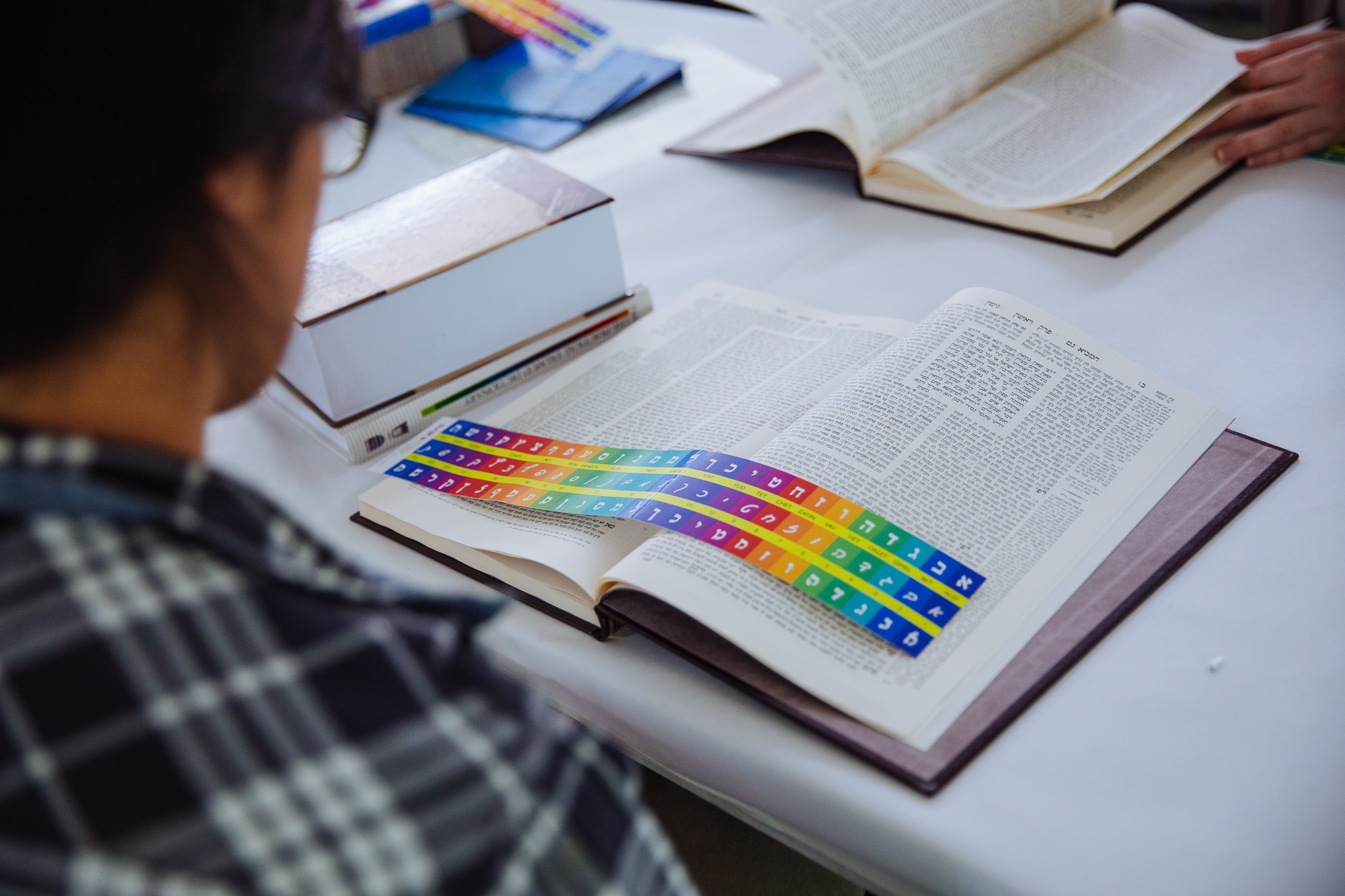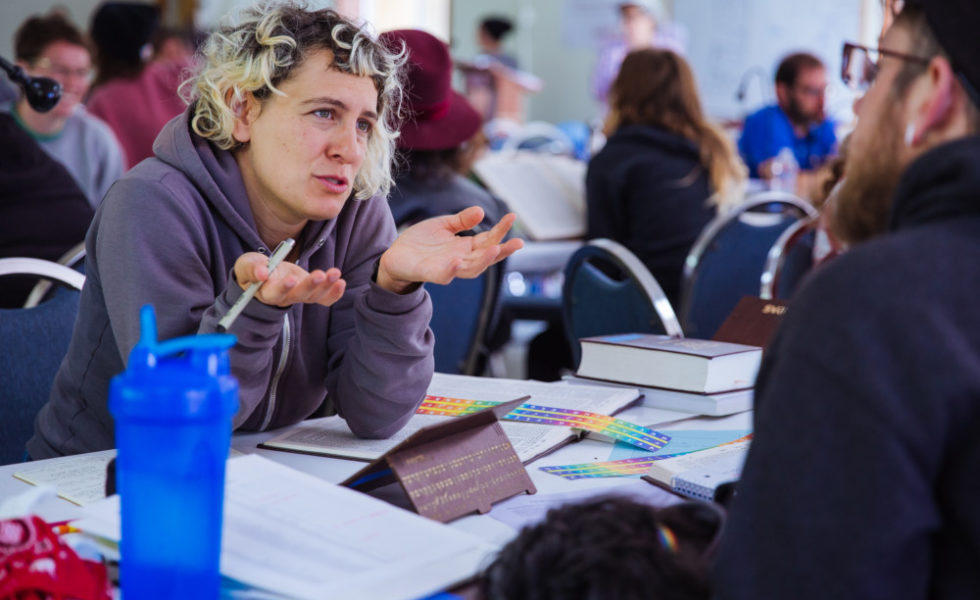
This classic SVARA sugya explores what it takes to be a judge and a leader (at SVARA, we call those folks “players”). What kinds of people should be in charge of a legal system or a community? According to the Rabbis, what are the attributes of a powerful, deeply Jewish leader? We broke this down into five chevruta sessions, but (as always!) y’all are encouraged to learn at the pace that feels best to you.
Prep the Sugya
Just like in the bet midrash, the SVARA method for DIY Learning starts with prepping the text in chevruta. In this step, you’ll move through a section of the sugya word by word, identifying each word’s root and core meaning, and creating an inside translation. Use the Hint Sheet to help break down any tricky words and the Kra Sheet to get context for any scriptural quotations you encounter. If you don’t have a bound masechet, you can download a digital daf to learn from.
This sugya begins toward the bottom of amud Sanhendrin 17a. We recommend breaking the sugya down into smaller sections as you cycle through the four steps of the SVARA method. We suggest learning this text in the following sections:
1) אמר רב כהנא … לא חזו ליה
2) א׳׳ר יוחנן אין … שומעת מפי המתורגמן
3) אמר רב יהודה … את השרץ מה׳׳ת
4) אמר רב אני … דין שיהא טהור
5) ולא היא … אקוץ בעלמא
Create an Outside Translation
After you’ve prepped a chunk of text, going word-by-word, in chevruta, it’s time to move from your inside translation to an outside translation. Make your best guess by identifying the verbs, subjects, and objects, inserting punctuation, and getting a feel for the back-and-forth structure of the text. In a SVARA Bet Midrash it would now be time for Shiur—time to unpack the text with a teacher all your bet midrash comrades. For DIY learning, listen to these recordings to compare your translation with a SVARA teacher’s. Coming soon, we’ll post some videos of SVARA staffers unpacking this sugya a little deeper in chevruta!
Below are recordings of a teacher reading and translating each section of text.
1) אמר רב כהנא סנהדרי שראו כולן לחובה פוטרין אותו מ׳׳ט כיון דגמירי הלנת דין למעבד ליה זכותא והני תו לא חזו ליה
Reading
Translating
2) א׳׳ר יוחנן אין מושיבין בסנהדרי אלא בעלי קומה ובעלי חכמה ובעלי מראה ובעלי זקנה ובעלי כשפים ויודעים בע׳ לשון שלא תהא סנהדרי שומעת מפי המתורגמן
Reading
Translating
3) אמר רב יהודה אמר רב אין מושיבין בסנהדרין אלא מי שיודע לטהר את השרץ מה׳׳ת
Reading
Translating
4) אמר רב אני אדון ואטהרנו ומה נחש שממית ומרבה טומאה טהור שרץ שאינו ממית ומרבה טומאה אינו דין שיהא טהור
Reading
Translating
5) ולא היא מידי דהוה אקוץ בעלמא
Reading
Translating
Go Deeper
Can’t get enough of this sugya? Neither can we! Our DIY Chevruta resources now include a range of SVARA commentary on our all-time favorite texts. Check out the articles below by our faculty and fairies in Hot Off the Shtender and the discussion of this sugya by Rosh Yeshiva Benay Lappe and Dan Libenson on The Oral Talmud.
Did this sugya inspire you to make art, music, poetry, pottery, or another type of creative expression? We’d love to display your commentary in whatever form it takes in the SVARA gallery. (You can check out what others have made too.)
Want to dig in even further? Let’s connect in fairy hours!


